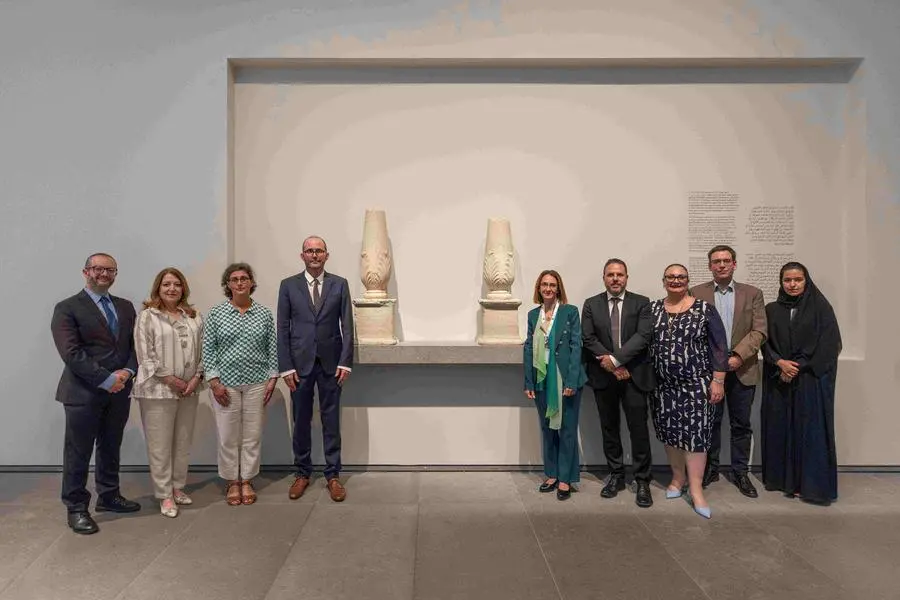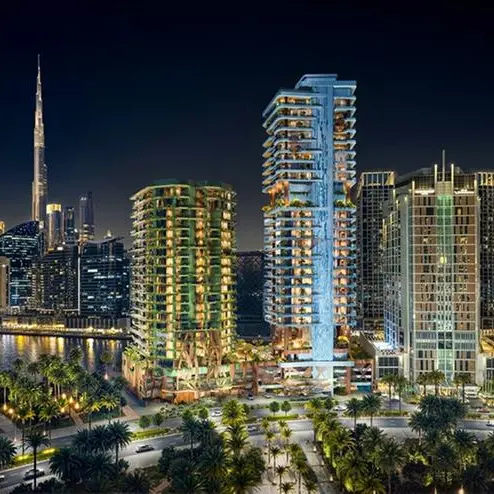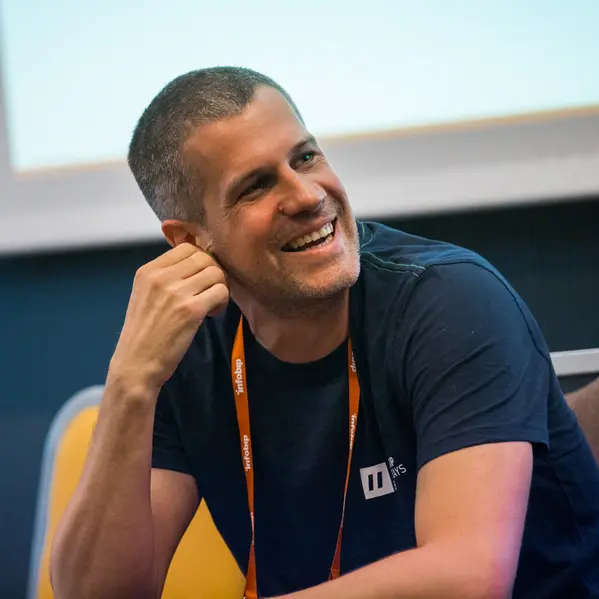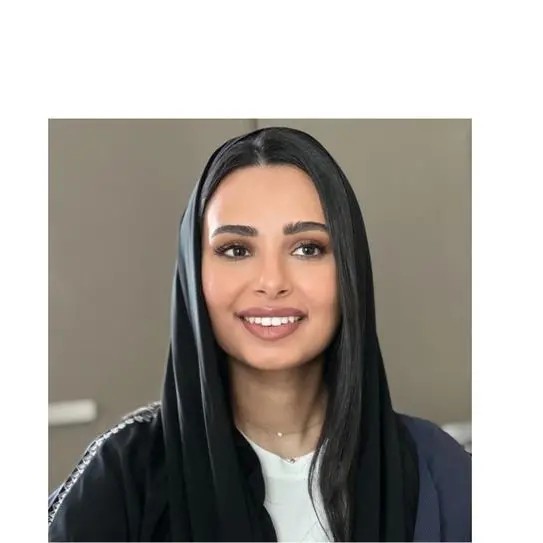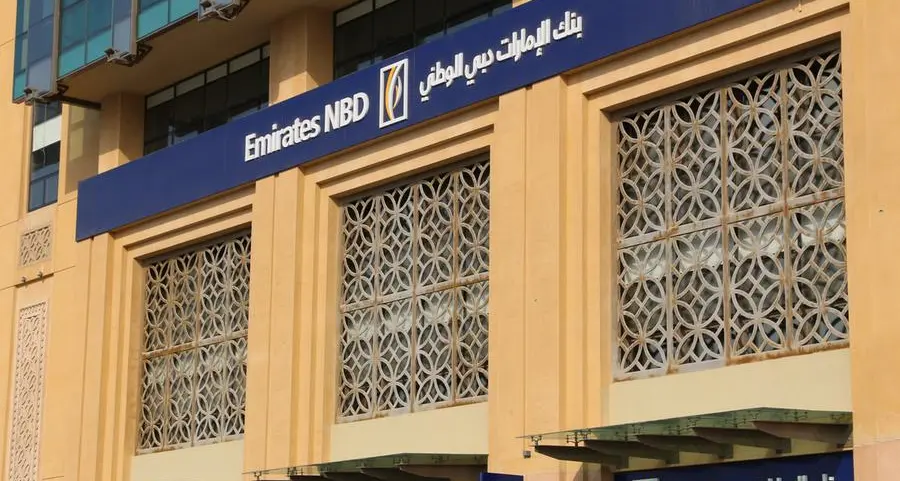PHOTO
- Two ornamental pillars, known as cippi, on loan from the National Museum of Archaeology, Valletta and Musée du Louvre will be on display at Louvre Abu Dhabi from June 2023 to June 2024
- The display of the ornamental pillars at Louvre Abu Dhabi marks the reunion of the cippi pair which had been parted since 1782
Abu Dhabi, UAE: In commemoration of the 50-year anniversary of the longstanding diplomatic relationship between the UAE and the Republic of Malta, the museum today announced two remarkable loans from the National Museum of Archaeology, Valletta and Musée du Louvre. For the first time in more than 240 years a pair of ornamental pillars, known as cippi, will be on display together at Louvre Abu Dhabi and will be available to the public for a year, from June 2023 to June 2024.
Currently housed separately at Musée du Louvre and the National Museum of Archaeology, Valletta, the display of the ornamental pillars at Louvre Abu Dhabi marks the reunion of the cippi pair which had been parted since
1782. The display of the cippi will form part of the thematic concerned with crossroads of influences between East and West in Gallery 5 at the museum, which is devoted to Civilisations and Empires.
H.E. Maria Camilleri Calleja, Ambassador of Malta to the United Arab Emirates, said: “2023 is an important year for both our countries, Malta, and the United Arab Emirates, as we celebrate our Golden Jubilee - 50 years of diplomatic relations forged in 1973 – which continue to amplify year after year. Malta is honoured and privileged to have a solid relationship with the Department of Culture and Tourism Abu Dhabi, we can now see the fruits of this relationship through the work of two auspicious institutions being Heritage Malta and the Louvre Abu Dhabi. Their very dedicated and professional labour of love, also with the collaboration of the Louvre in Paris, has yielded a narrative of scholarly endeavour, but also mystery and adventure from the past, that takes us on a journey of discovery as to how these twin Cippi unearthed in Malta were separated by fate but reunited by design. This narrative can also be translated into an allegory of the ties between Malta and the United Arab Emirates which, although geographically apart and diverse, their will to work together has brought them to cooperate on many levels by people of good will, politically, commercially, in sports, on people-to-people levels, in research and innovation and not least in the cultural sector. This is the first-ever exhibition that Malta is putting up at the Louvre Abu Dhabi, but I am convinced, certainly not the last.”
Manuel Rabaté, Director, Louvre Abu Dhabi, said: “The reunion of these remarkable ornamental pillars at Louvre Abu Dhabi is a testament to our mission of telling stories of cultural connections. For the first time in over 240 years, these cippi will be displayed together, marking a significant moment in the preservation and celebration of our shared heritage. These loans showcase the power of art to bridge the gaps across times, geographies, and civilisations. Through this collaboration with the National Museum of Archaeology in Valletta, Malta and the Musée du Louvre in Paris, we have brought together these extraordinary pieces. This rare opportunity to see these cippi up close offers a fascinating and enriching experience for our visitors, underscoring our commitment to sharing the beauty and significance of cultural artefacts.”
Cippi, in the Greco-Roman world, were often inscribed with information, acted as border demarcations, milestones, funerary monuments, or, in some instances, possible temple dedications to divinities. In the case of the cippi temporarily displayed at Louvre Abu Dhabi, their flat tops might have been used as a support surface to hold dishes for burning incense or presenting offerings.
The two ornamental pillars, which date to the 3rd or 2nd century BCE are decorated with beautifully carved alternating acanthus and lance-like leaves and set on rectangular bases, both of which contain identical inscriptions in Phoenician and Greek script. The writing confirms the equivalent identification of the Phoenician god Melqart, with the Greek hero Herakles, and signifies the successful exportation of Phoenician gods, language, and culture, beyond the trade of goods, as part of Mediterranean commerce.
It was the Greek inscriptions on the cippi of Malta that were key in deciphering the Phoenician alphabet in 1758 by Abbé Barthélémy, a French epigraphist, much like the ancient Greek text on the Rosetta Stone held the key to deciphering Egyptian hieroglyphs in 1822. Following this deciphering, one of the cippi was offered to France by the Order of Malta.
Noel Zammit, Heritage Malta’s Chief Executive Officer, said that Malta has maintained strong ties with the United Arab Emirates, and both countries are actively collaborating to further strengthen this relationship through cultural heritage diplomacy. To achieve this, the two nations are engaging in a cultural dialogue involving three countries. This represents a significant stride towards this goal. Additionally, this marks the first time that Malta is partnering with the Abu Dhabi Louvre, and it is hoped that this collaboration will foster a promising future for the relationship between the two entities.
“With the loan of the cippus to Louvre Abu Dhabi, we are reminiscing collaborations and diplomatic relations which happened in the 18th century, when copies of the cippi were sent abroad for decipherment. Consequently, in recognition of decipherment by Barthelemy, the Order of the Knights of St John offered one of the cippi to the Academie des Inscriptions et Belles Lettres. This arrived in France in February 1782,” said Mr Zammit.
Hélène Le Meaux, Chief Curator at the Department of Near Eastern Antiquities at Musée du Louvre, said: “Studied and recognized for the history of Phoenician deciphering by Abbé Barthélémy in 1758, these two cippis are also very interesting from the archaeological and historical points of view. Indeed, these two monuments, because they were offered, probably in the 2nd century B.C., by two brothers of the Phoenician city of Tyre to the
god Milqart in a sanctuary of Malta, they present a bilingual inscription in a concern of universality. As one of them was handed as a gift of the Order of Malta to the Academy of France, these cippis are a token of recognition and homage, illustrate perfectly the circulation of men and artworks through time”.
Francois Chevrollier, Chief Curator, Louvre Abu Dhabi, said: “The gathering at the Louvre Abu Dhabi of the two cippi of Malta marks an important moment in the history of these two exceptional artworks, as they are temporarily reunited at the museum for the first time in nearly two and a half centuries. The bilingual Greek and Phoenician inscriptions engraved on the bases allowed the deciphering of Phoenician in the mid-18th century, decades before Champollion's reading of the hieroglyphs: in this sense, this special installation also echoes the great adventure of the rediscovery of ancient languages in the 18th and 19th centuries. The presentation of the two pillars reinforces the themes addressed in the gallery devoted to "Civilisations and Empires" since they evoke exchanges, artistic symbioses, and cults in the ancient Mediterranean, as do several other works exhibited nearby.”
Since its opening in 2017, Louvre Abu Dhabi has established significant international partnerships through mutual loan agreements that shed light on the world’s history and cultural heritage. The expansion of international cooperation remains a priority for Louvre Abu Dhabi and these partnerships include extending loan agreements with Jordan, Saudi Arabia, Oman, South Korea, and the Philippines.
Programming around the Special Installation
A newly built niche will highlight the special display of the cippi, which will be accompanied by a series of cultural engagement, mediation and educational initiatives, comprising: the inclusion of the cippi to Louvre Abu Dhabi’s app, an audio commentary interview, a teacher and children’s resource, dedicated tours and workshops during the ‘Art Lab’ schedule, as well as the inclusion of the cippi in the museum’s ‘Drawing at the Museum’ and ‘Art History Walks’ activities.
Louvre Abu Dhabi’s new operating hours
- Museum: Open: 10 am – 6.30 pm (Tue - Thurs); extended hours: 10am – 8.30pm (Fri - Sun); closed on Mondays.
- Dome: Open: 10am – midnight (Tues - Sun) - last entry 11 pm; closed on Mondays
- Museum Café: Open: 10 am – 6.30 pm (Tue - Thurs); extended hours: 10 am – 10 pm (Fri – Sun). Closed on Mondays
- Art Lounge: Open: 3 pm – 12 am (last orders 11 pm); closed on Mondays
- Fouquet’s Abu Dhabi and Marta Bar: Open: 12 pm – 12 am (last orders at 10 pm) (Tue – Thurs, Sun); weekends: 12 pm – 1 am (last orders at 10.30 pm) (Fri – Sat); closed on Mondays
- Aptitude Café: Open: 9 am – 10 pm (daily including Mondays) Follow Louvre Abu Dhabi on social media: Facebook (Louvre Abu Dhabi), Twitter (@LouvreAbuDhabi) and Instagram (@LouvreAbuDhabi) #LouvreAbuDhabi.
ABOUT LOUVRE ABU DHABI
Created by an exceptional agreement between the governments of Abu Dhabi and France, Louvre Abu Dhabi was designed by Jean Nouvel and opened on Saadiyat Island in November 2017. The museum is inspired by traditional Islamic architecture and its monumental dome creates a rain of light effect and a unique social space that brings people together.
Louvre Abu Dhabi celebrates the universal creativity of mankind and invites audiences to see humanity in a new light. Through its innovative curatorial approach, the museum focuses on building understanding across cultures: through stories of human creativity that transcend civilisations, geographies and times.
The museum’s growing collection is unparalleled in the region and spans thousands of years of human history, including prehistoric tools, artefacts, religious texts, iconic paintings and contemporary artworks. The permanent collection is supplemented by rotating loans from 21 French partner institutions, regional and international museums.
Louvre Abu Dhabi is a testing ground for new ideas in a globalised world and champions new generations of cultural leaders. Its international exhibitions, programming and Children’s Museum are inclusive platforms that connect communities and offer enjoyment for all.
ABOUT MUSÉE DU LOUVRE
A former royal residence, the Louvre has been a part of French history for eight centuries. The collections it houses today, among the finest in the world, span nine millennia and five continents. Divided into nine departments, they feature some 33,000 artworks including universally renowned masterpieces such as the Mona Lisa, the Winged Victory of Samothrace and the Venus de Milo.
ABOUT FRANCE MUSÉUMS
Following the intergovernmental agreement between France and the Emirates of Abu Dhabi signed in 2007, France Muséums, a cultural consulting and engineering agency, was created to work towards the creation of Louvre Abu Dhabi and support the project in all its dimensions (strategic, scientific, cultural, building, human resources).
Since the opening of the UAE museum in 2017, France Muséums continues to support Louvre Abu Dhabi in four main fields of activity: the management and coordination of loans from French museums for the permanent galleries of the museum, the organisation and production of international exhibitions, training of teams and a wide range of consultancy and auditing assignments in all areas of museum management.
France Muséums mobilises its teams based in Paris and Abu Dhabi and a network of 21 major French cultural institutions and museum partners : Musée du Louvre, Centre Pompidou, Etablissement public des musées d’Orsay et de l’Orangerie, Bibliothèque nationale de France, Musée du quai Branly-Jacques Chirac, Réunion des Musées Nationaux et du Grand Palais (RMN-GP), Château de Versailles, Musée national des arts asiatiques-Guimet, Musée de Cluny – musée national du Moyen-Âge, École du Louvre, Musée Rodin, Domaine National de Chambord, Musée des Arts Décoratifs (MAD), Cité de la Céramique – Sèvres et Limoges, Musée d’Archéologie nationale – Saint-Germain en Laye, Château de Fontainebleau, OPPIC (Opérateur du patrimoine et des projets immobiliers de la culture), Musée de l’Armée, Musée des Beaux-Arts de Lyon, Institut National du Patrimoine and Centre de Recherche et de Restauration des Musées de France (C2RMF).
www.francemuseums.fr/en
ABOUT SAADIYAT CULTURAL DISTRICT
Saadiyat Cultural District on Saadiyat Island, Abu Dhabi, is devoted to culture and the arts. An ambitious cultural undertaking for the 21st century, it will be a nucleus for global culture, attracting local, regional and international guests with unique exhibitions, permanent collections, productions and performances. Its ground-breaking buildings will form a historical statement of the finest 21st century architecture; Zayed National Museum, Louvre Abu Dhabi and Guggenheim Abu Dhabi. These museums will complement and collaborate with local and regional arts and cultural institutions including universities and research centres.
ABOUT THE DEPARTMENT OF CULTURE AND TOURISM – ABU DHABI
The Department of Culture and Tourism – Abu Dhabi (DCT Abu Dhabi) drives the sustainable growth of Abu Dhabi’s culture and tourism sectors and its creative industries, fuels economic progress and helps achieve Abu Dhabi’s wider global ambitions. By working in partnership with the organisations that define the emirate’s position as a leading international destination, DCT Abu Dhabi strives to unite the ecosystem around a shared vision of the emirate’s potential, coordinate effort and investment, deliver innovative solutions, and use the best tools, policies and systems to support the culture and tourism industries.
DCT Abu Dhabi’s vision is defined by the emirate’s people, heritage and landscape. We work to enhance Abu Dhabi’s status as a place of authenticity, innovation, and unparalleled experiences, represented by its living traditions of hospitality, pioneering initiatives and creative thought.
